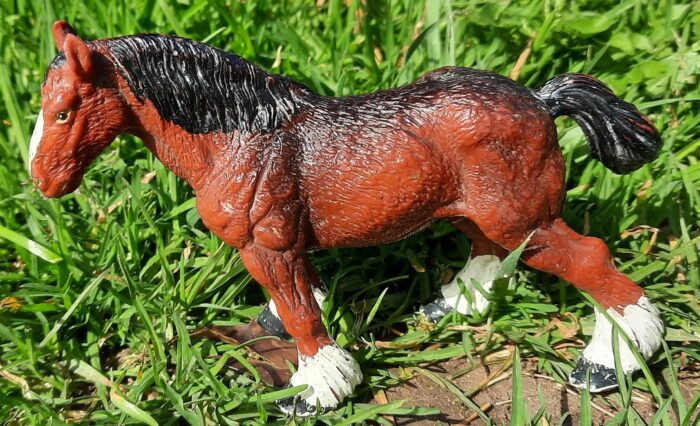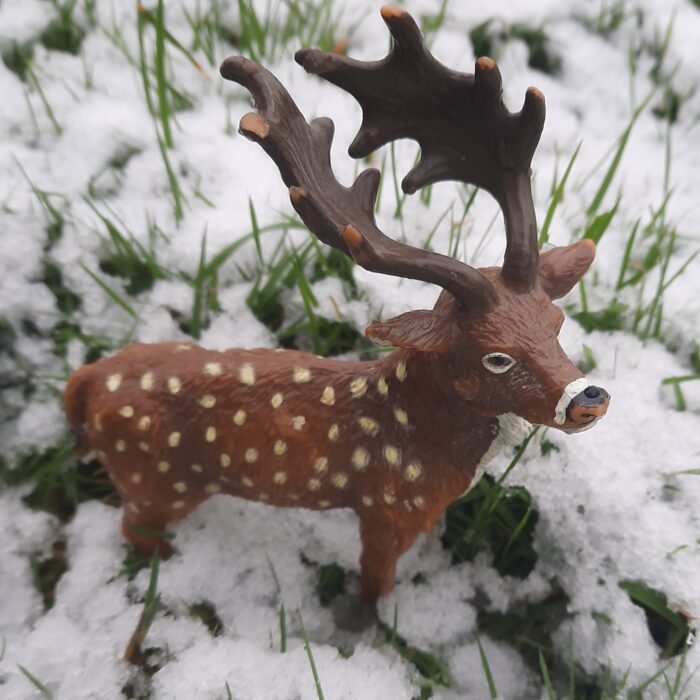When it comes to animals known for being strong work animals, helping humans pull heavy equipment and working in fields, it is the horse (Equus ferus caballus). The largest and strongest breed of these is the Shire horse, a breed that holds the title of largest and tallest horse, the biggest on record being over seven foot tall.
Author: Sirenia
 I'm Daniel Waite (aka ‘Sirenia’ on the Animal Toy Blog/Forum and ‘Indohyus’ on the Dinosaur Toy Blog/Forum). Ever since I was young, I would love any chance to see animals. Whether it’s visiting Safari parks, zoos, farms or local parks, I would love seeing animals around, doing what they did. Though I skewed towards ancient species later on, I still kept my love for extant species alive. I’ve had many pets, including dogs (my greyhound River is in the photo), cats, ferrets, mice and goldfish. I liked collecting many animal figures over the years, often from my trips to zoos and safari parks, resulting in a vast menagerie of models. As a result, my reviews can come with a heavy feeling of nostalgia. Hope you enjoy!
I'm Daniel Waite (aka ‘Sirenia’ on the Animal Toy Blog/Forum and ‘Indohyus’ on the Dinosaur Toy Blog/Forum). Ever since I was young, I would love any chance to see animals. Whether it’s visiting Safari parks, zoos, farms or local parks, I would love seeing animals around, doing what they did. Though I skewed towards ancient species later on, I still kept my love for extant species alive. I’ve had many pets, including dogs (my greyhound River is in the photo), cats, ferrets, mice and goldfish. I liked collecting many animal figures over the years, often from my trips to zoos and safari parks, resulting in a vast menagerie of models. As a result, my reviews can come with a heavy feeling of nostalgia. Hope you enjoy!All reviews by this author
Killer Whale (AAA)
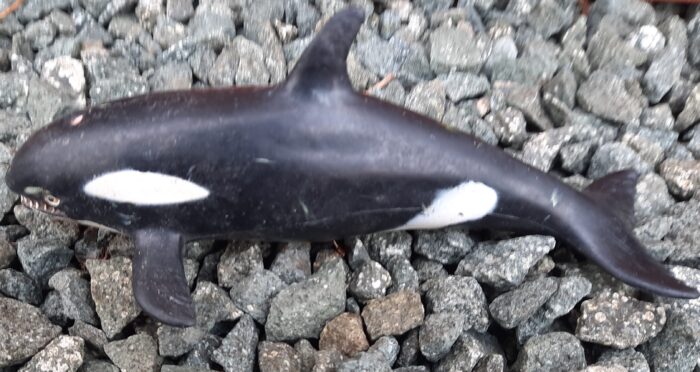
The oceans are full of wonderous, graceful but also dangerous animals, though many of these reactions depend on what species you are. This review will look at one that, to us, is graceful, beautiful and intelligence, but to many fish and whales is a dangerous predator, the killer whale (Orcinus orca), or the orca.
Tiger, pair (Noah’s Pals by Caboodle! Toys LLC)

“Tyger, Tyger, burning bright,
In the forest of the night,
What immortal hand or eye
Can frame thy fearful symmetry?” The Tyger, William Blake, 1794
This poem, used in the Songs of Experience by William Blake, was a counterpoint of the Songs of Innocence poem, The Lamb, and you can see why.
Pronghorn (Wildlife by Mojö Fun)
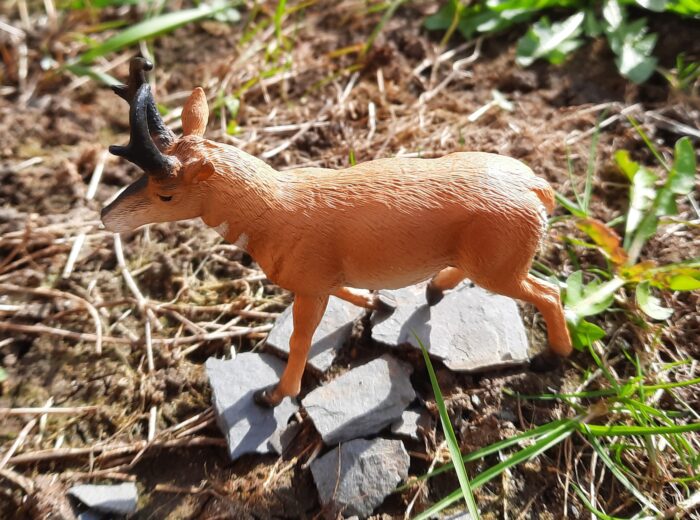
In nature, anachronisms are an interesting mystery. Why do Lemurs cry out in terror of birds that won’t attack them? Why do avocados’ have such large seeds? Why do the trees of New Zealand have sharp leaves as saplings? The animal of this review has an intriguing be partially useful anachronism, the pronghorn (Antilocapra americana), an animal looking like an antelope or deer, but actually being closer related genetically to giraffe and okapi.
Anglerfish (AAA)
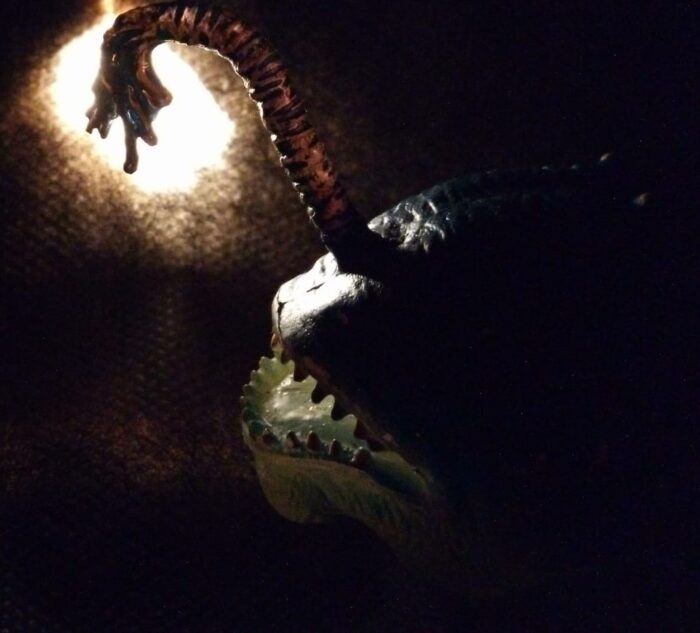
The oceans of the world are some of the most mysterious habitats on the planet. While animals like whales, turtles and rays live in the light, the deeper you go, the darker it gets, and the sun dare not shine on the creatures that hide in the permanent night. It is an area of the world that is still being uncovered to this day, and the life forms that have evolved there are truly bizarre.
Komodo Dragon, 2019 (Wild Life by Schleich)
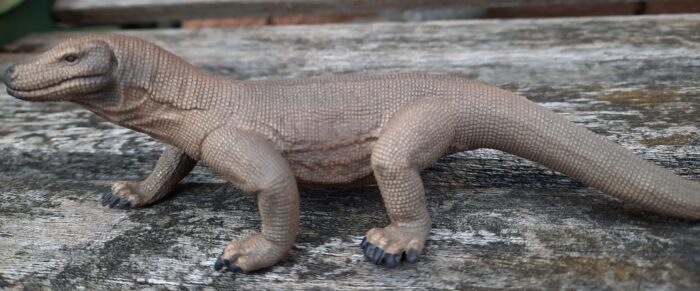
Giant animals exist throughout the world. This can be seen in insular gigantism, and the isle of Komodo has the mighty dragon, the Komodo dragon (Varanus komodoensis). This ten foot lizard is the top predator in it’s environment, using it’s size, strength, speed and venom to outmatch any species in the area, no matter where they are.
Polar Bear, cub (Wild Life by Schleich)
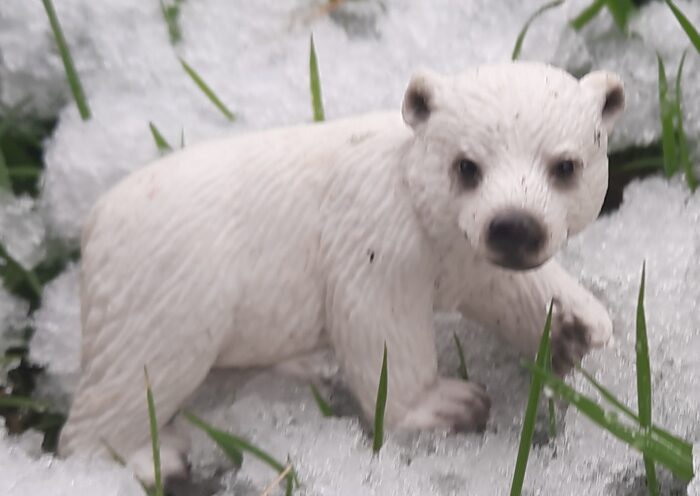
So, here we are, the final review of my “Winter Wonderland” series, and we conclude with perhaps the greatest of mammals to walk the ice and snow of the world: the polar bear (Ursus maritimus). These hypercarnivourous bears roam the Arctic circle, hunting prey on the snowy tundra, the largest of the bears.
Fallow Deer (Early Learning Centre)
Snow Leopard, youngster (AAA)
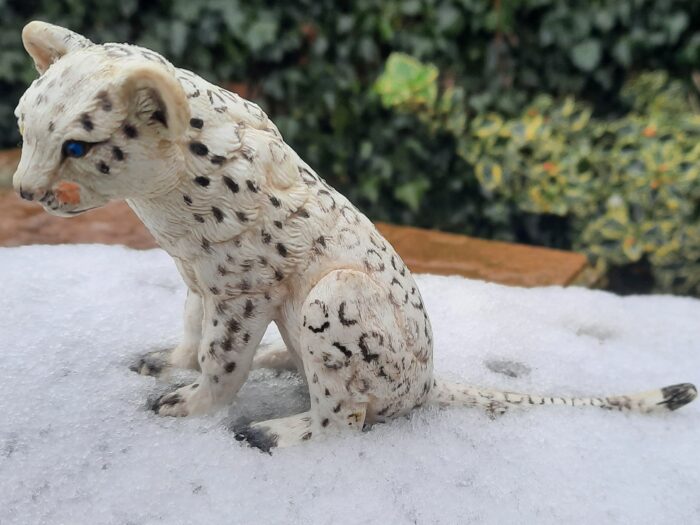
Continuing the “Winter Wonderland” series, we are going into the highest elevations of the world, as we look at a figure of one of the rarest cats in the world, the snow leopard (Panthera uncia). These beautiful cats are found across the mountainous regions of central and south Asia, hunting across the Tibetan Plateau and Siberia.
Elk (Authentics Forest by Safari Ltd.)
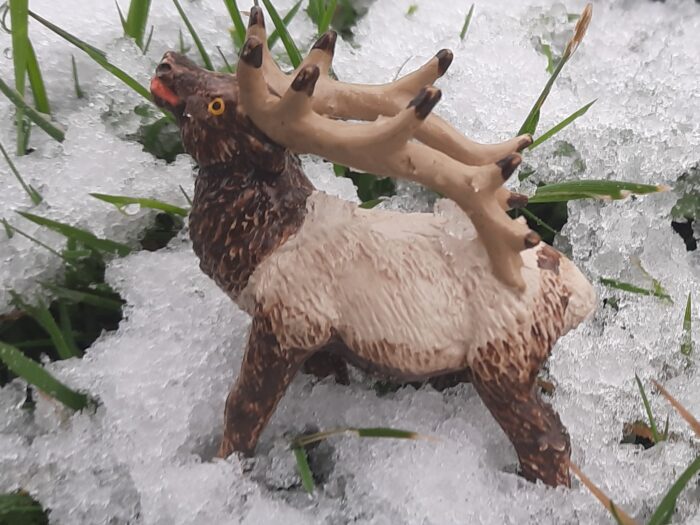
Once more, we tread into the “Winter Wonderland” With a magnificent creature. The frozen north is full of cervids, better known as deer, from moose to fallow deer. One famous member, found in North America and Europe, is the elk (Cervus canadensis), one of the largest mammals in North America and one of the largest deer in the world (although not as big as the moose).
New Zealand Giant Eagle (Yowies Lost Kingdoms Series A by Cadbury)
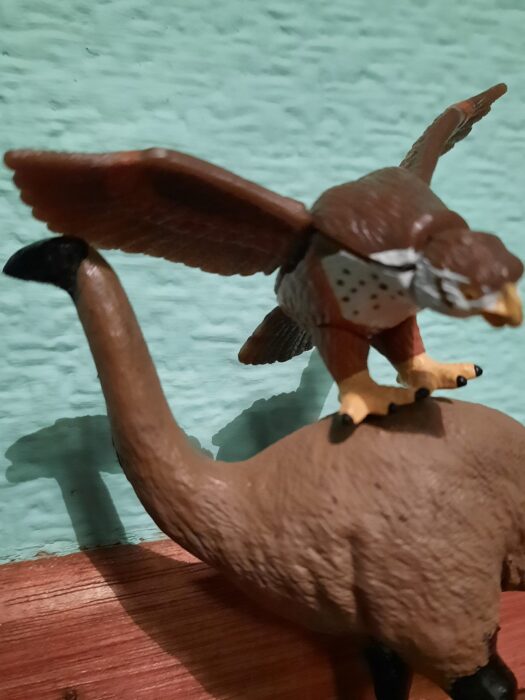
When a species goes extinct, you take out one piece of the food web, affecting everything above and below it. When the Moa went extinct, so too did it’s main predator, the largest eagle to ever have existed, Haast’s eagle, Hieraaetus. Once it flew through the forests of New Zealand, preying on the Moa, grabbing their pelvis and slashing their neck with their sharp talons, which gave them their initial (and cooler sounding) scientific name of Harpagornis.
Brown Bear Roaring (AAA)
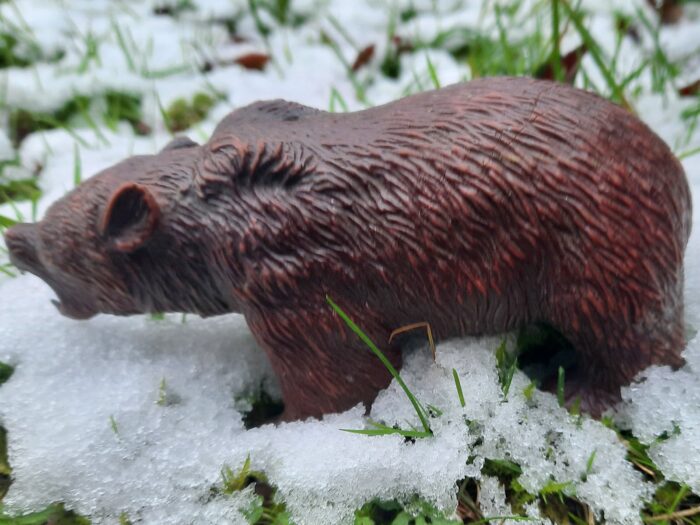
Once more we delve into the “Winter Wonderland”, to a creature that sleeps during this time of cold and hardships, the bear. These carnivorans are fairly successful, thanks to their ability to tackle any food, be it fauna or flora, to build themselves up for hibernation in the cold winter months.

